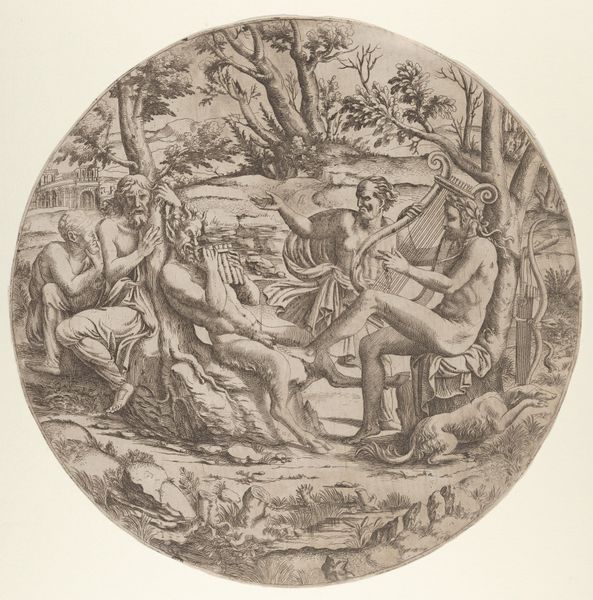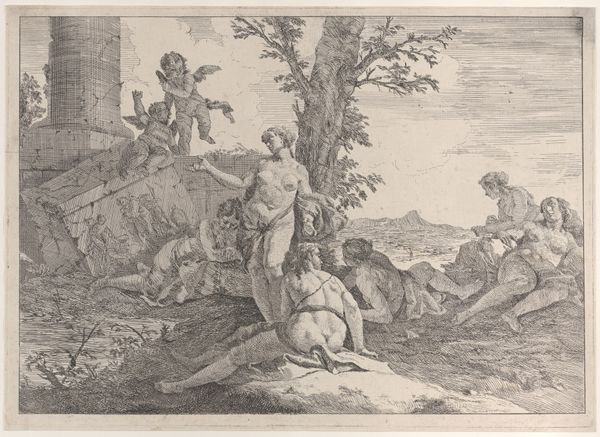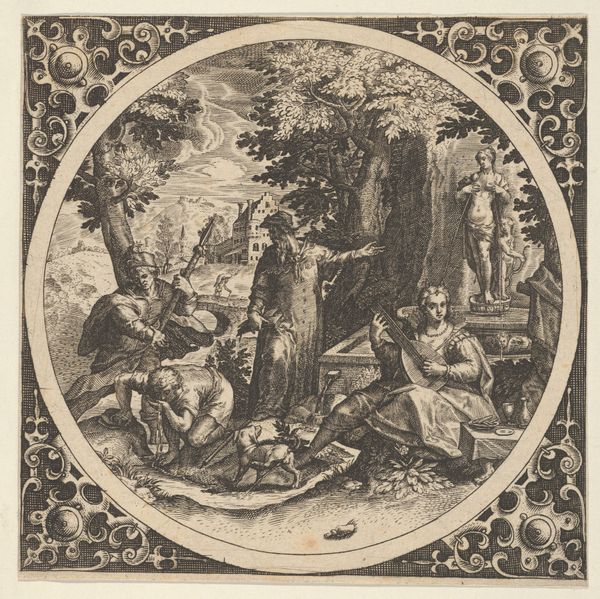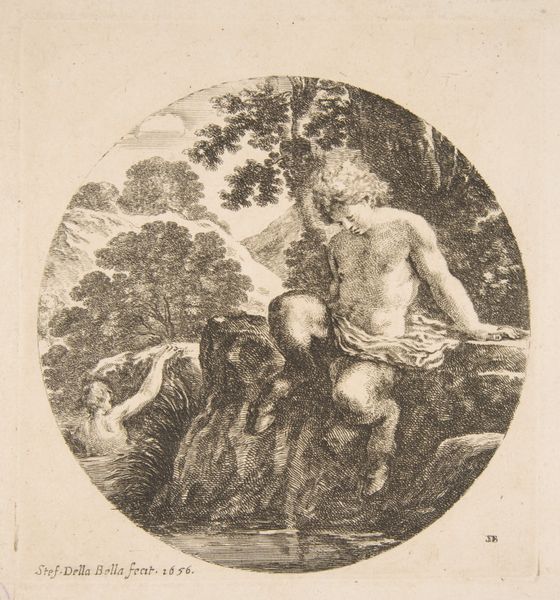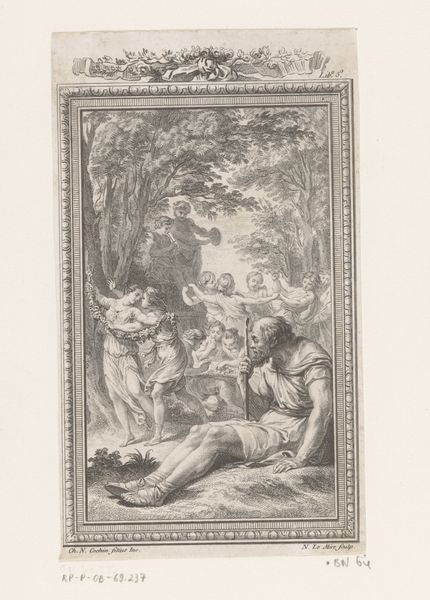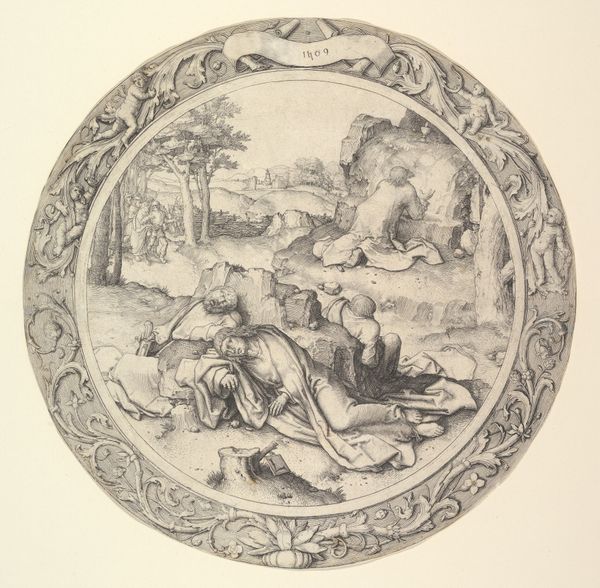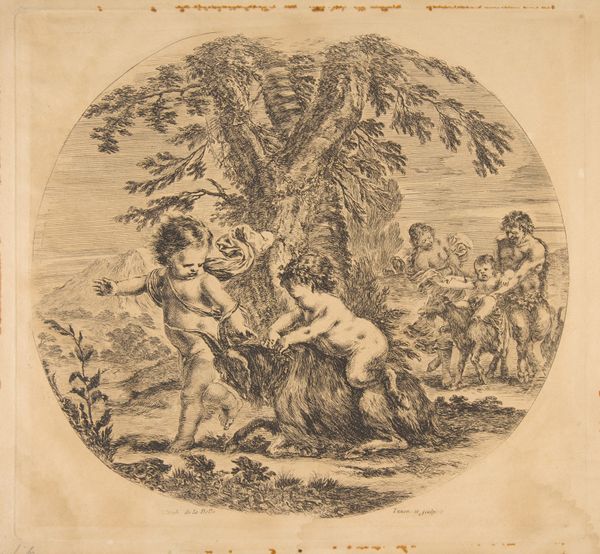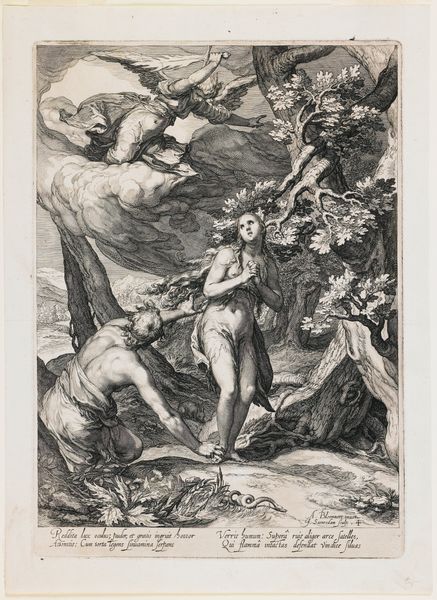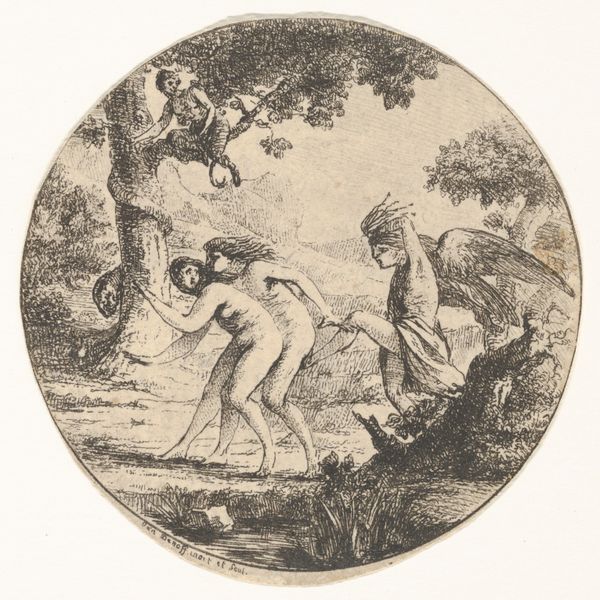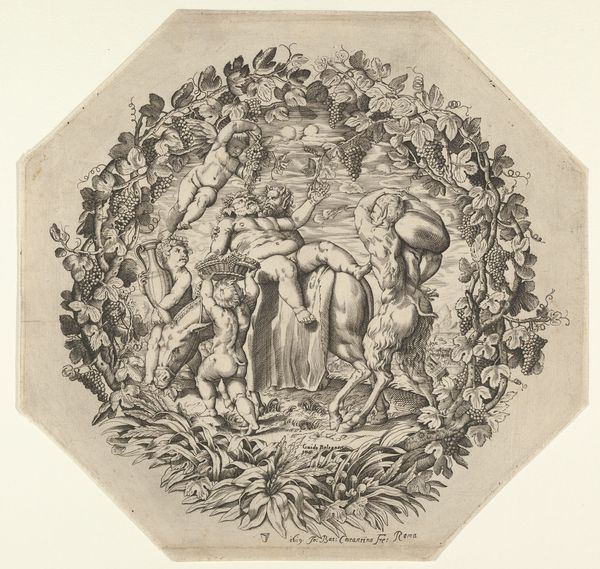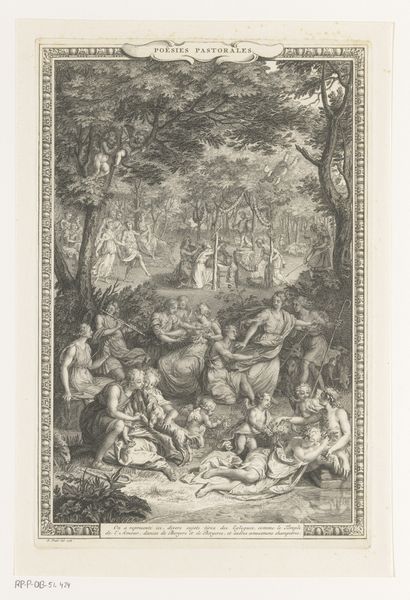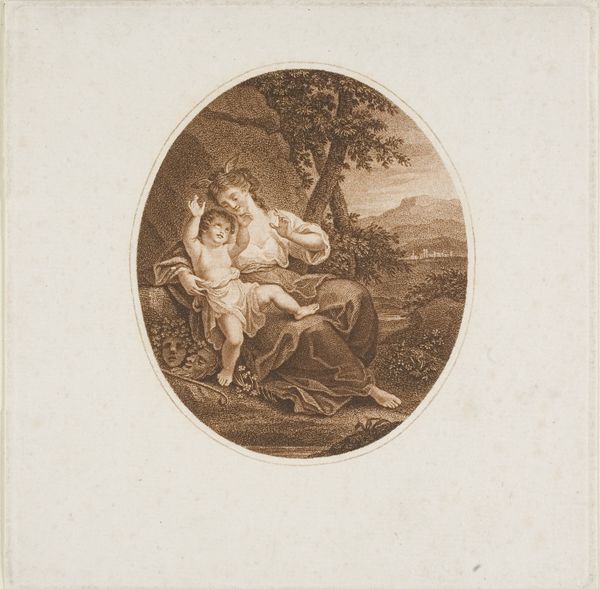
Two children playing with a goat in center, turned towards the right, a child satyr sitting atop the goat, the other child gesturing towards the right, a satyr and a woman watching their child ride a goat in the background, an oval composition 1655 - 1660
0:00
0:00
drawing, print, engraving
#
drawing
#
fairy-painting
#
allegory
# print
#
genre-painting
#
nude
#
engraving
Dimensions: Sheet: 8 15/16 x 9 5/8 in. (22.7 x 24.5 cm)
Copyright: Public Domain
Curator: Welcome. Here we have Stefano della Bella’s “Two children playing with a goat in center, turned towards the right, a child satyr sitting atop the goat…” created sometime between 1655 and 1660. Editor: What a fanciful scene! There's such dynamism in this oval composition—the figures practically leap off the surface, an exuberant moment frozen in time. Curator: Indeed. Note how Bella masterfully employs line and tone using engraving to convey both the textures of the foliage and the muscularity of the satyrs. It is executed solely as a drawing turned into a print and an allegory too! Editor: Yes, and consider how the imagery reflects prevailing attitudes of the era toward childhood. Children were being painted to emulate cupids and to create visual homilies with nature in ways never done before. Curator: Absolutely, and let us not forget the prevalence of mythological subject matter within Baroque art. The satyr and goat conjure classical motifs, yet rendered with a playful charm tailored to 17th-century tastes. Its purpose certainly aligns with creating conversation within private settings of aristocrats in Bella's social environment. Editor: I find it intriguing to examine the work within the context of its patronage and public sphere of display. I’d venture to guess it acted more as intellectual exercise rather than moral lesson, perhaps circulating amongst elite circles? Curator: Your point resonates. The narrative and symbolic elements definitely seem pitched at an informed audience capable of decoding the imagery—an art that blends pagan elements with sentimental portrayals of childhood. Editor: Looking again, I note how Della Bella created multiple print editions, spreading this single artistic idea within a society of artistic demand. Curator: This piece invites one to see beyond its charming facade. I am struck once more by Della Bella’s masterful touch. It has been so rewarding, understanding his art at play, through his own perspective. Editor: I concur! It prompts valuable dialogues about not just Bella's artistic choices but wider questions about our society’s perception of beauty and purpose.
Comments
No comments
Be the first to comment and join the conversation on the ultimate creative platform.

